#pomo land
Text
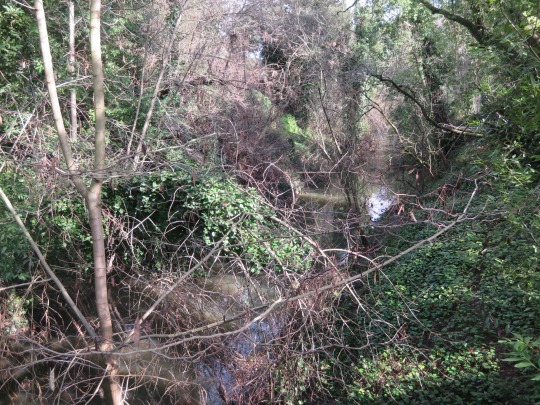
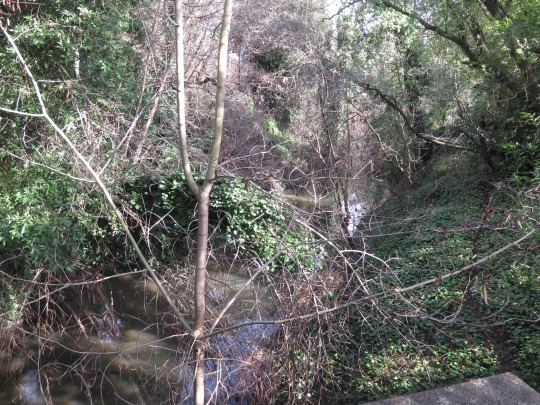


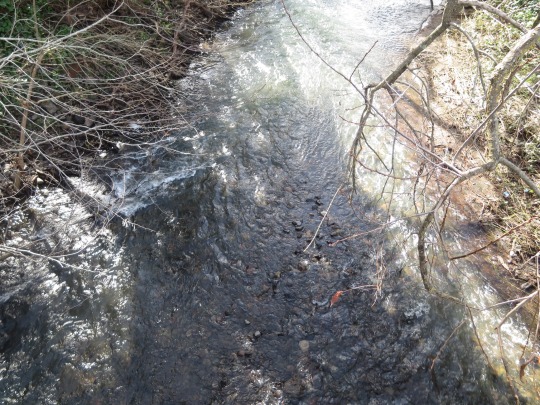
From my walk the either day. The water is so much higher than normal due to the rains. I’m in love.
Santa Rosa, CA
#nature#creeks#plants#flowers#urban photography#urban explore#photography#707#santa rosa#California#Sonoma#Sonoma county#Mendocino county#Pomo#Pomo land#Northern California#pacific northwest#Lake Miwok#Lake Miwok Wappo#Mother Nature#native#native land#Native American
3 notes
·
View notes
Text
decided to spend my 28th rotation on a solo trip this year to Northern Pomo lands, my favorite area of the California coast ~ constantly humbled and in awe of this sacredt lil life. Deep bows to my Matrilineal side, specifically my Nana. She is my cumple twin as well as La Virgencita and I am honored to share this day with two strong matriarchs 🕯️🤲🏽🕯️ every day is a gift, blessings to another year of this life walk
11 notes
·
View notes
Text
It can't be new year in Mexico without guns going off
2 notes
·
View notes
Quote
Many lost their language, and language is really core to what we were doing in a cultural society. When grandfather passes on culture to grandson, there’s a lot of missing links to that passage, because grandfather was a product of a system that didn’t allow him to be who he was as a Native person inside. So as a protection measure, sometimes he had to say to grandson, ‘I’m not sure if we want to do this, but here are some songs, here’s some ceremony, this is what it looks like.
— Jaime Boggs (Eastern Pomo/Wailaki/Concow, traditional singer and dancer, tribal citizen and council member of Robinson Rancheria of Pomo Indians, and board member of the Sinkyone Council)
#jaime boggs#protecting tc’ih-léh-dûñ#history#racism#oppression#languages#music#dance#land back#native americans#pomo people#eastern pomo#wailaki#concow#robinson rancheria of pomo indians#usa#intertribal sinkyone wilderness council#family#grandparents#grandchildren
6 notes
·
View notes
Text
The Clear Lake hitch (Lavinia exilicauda chi) is a rare endemic species of minnow living only in the Clear Lake watershed of northern California, a fish that was once a “symbol of abundance” for Indigenous people. In December 2022, the Big Valley Band of Pomo Indians, Robinson Rancheria Band of Pomo Indians, Scotts Valley Band of Pomo Indians and the Habematolel Pomo of Upper Lake ask for immediate emergency protection of the hitch. The fish is in danger of extinction as the last observed successful breeding for the species was in 2017, and the creatures only have a six-year-long lifespan. US land management agencies say hitch numbers have “fallen to near zero.” However, in the past, there were millions of hitch in the watershed each year, and the fish was important to Indigenous food systems. Local “entrepreneurs” prefer to protect the introduced non-native bass, which voraciously preys on the endangered hitch. Clear Lake hosts dozens of bass tournaments each year, events large enough to attract international visitors. There is a past-time tradition (”hitching”) of children beating the hitch to death with baseball bats in the springtime as the hitch gather in streams to try to spawn. The hitch is also threatened by pesticides, runoff, and overuse of water for the region’s prominent local vineyards. The hitch is referred to as a “trash fish,” and some feel that this insults the importance of the fish to Pomo people.
Excerpts below from: Louis Sahagun of Los Angeles Times. “As a sacred minnow nears extinction, Native Americans of Clear Lake call for bold plan.” As published at Phys.org. 6 December 2022.
---
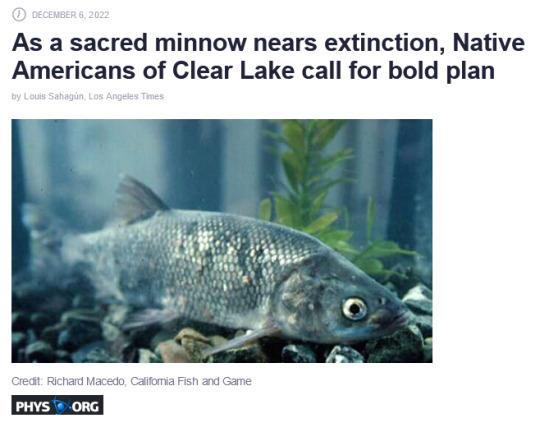
Spring runs of a large minnow numbering in the millions have nourished Pomo Indians since they first made their home alongside Northern California’s Clear Lake more than 400 generations ago. The Clear Lake hitch glinted like silver dollars as they headed up the lake’s tributaries to spawn, a reliable squirming crop of plenty, steeped in history [...].
In all that time, the hitch’s domain, about 110 miles northwest of Sacramento, had never suffered the degradation of recent years.
Now, with a growing sense of sorrow, if not anger, the Pomo Indian tribes of Clear Lake are watching the symbol of abundance and security they call chi dwindle into extinction.
---
On Monday [December 2022], they took the rare and drastic step of urging Interior Secretary Deb Haaland to use her emergency powers and invoke the federal Endangered Species Act on behalf of the Clear Lake hitch. “Bringing the chi back will require a bold plan of action devised by people with the power to move mountains,” said Ron Montez, tribal historic preservation officer for the Big Valley Band of Pomo Indians.
“I have almost zero confidence in state or federal officials to save the chi and our way of life,” Montez, 72, said. [...]
The Clear Lake hitch was designated as a threatened species under California’s Endangered Species Act in 2014. Since then, however, its numbers have fallen to near zero, according to recent surveys.
Some causes of the hitch’s decline, however, seem extraordinarily difficult to fix: prolonged drought, mercury contamination, gravel mining, an overtaxed water distribution system, pesticides and runoff from vineyards [...], and predatory nonnative game fish. [...]
---
The 2023 spring spawning season is crucial for the continued survival of the Clear Lake hitch, scientists say. That’s because the last observed successful spawning was in 2017. “Hitch have a six-year life span,” said Meg Townsend, an attorney with the Center for Biological Diversity. [...]
---
But until its fate is known for certain, Michael Fris, a field supervisor at the U.S. Fish and Wildlife Service, said his agency is unlikely to list the hitch on an emergency basis. [...] That kind of talk prompted the Center for Biological Diversity, together with the Big Valley Band of Pomo Indians, Robinson Rancheria Band of Pomo Indians, Scotts Valley Band of Pomo Indians and the Habematolel Pomo of Upper Lake to take their request for emergency listing to Haaland.
All involved agree that seeking intervention under the federal Endangered Species Act is an act of desperation. Only two species have been emergency-listed as federally endangered over the last 20 years: the Miami blue butterfly in 2011 and Nevada’s Dixie Valley toad earlier this year. [...]
---
The hitch is a 12-inch-long minnow found only in and around the oldest, largest and perhaps most polluted and wildfire-prone watershed in California. In 2020, the Lake County region was charred by six of the 20 largest wildfires in state history. [...]
It’s been the poor luck of the hitch to require adequate stream flows in February, March and April to trek from the lake to spawning beds at the same time agricultural interests need water to defrost their vineyards.
---
“An emergency listing would force people to consider alternatives to the way water is used in this region,” said Sarah Ryan, environmental director for the Big Valley Band of Pomo Indians.
Beyond water flows, the prospect of emergency-listing the hitch raises other economically significant issues connected to the lake’s food chain: Zooplankton are eaten by shad, crayfish and hitch, which are favored by monster catfish and largemouth bass.
Clear Lake entrepreneurs host dozens of professional bass tournaments each year that are supported by contestants from around the world.
The most popular lures in local tackle shops are hitch replicas that cost up to $180 each. Other lures are made to resemble juvenile hitch and sold under a slogan that some people feel mocks the creature’s cultural importance to Pomo people: “The All-American Trash Fish.”
Over at [C.O.], a sporting goods store on the southern end of the lake, old-timers still talk about how local kids had a tradition of “hitching,” beating hitch to death with baseball bats for fun as they ascended streams to spawn in spring.
They also grumble over the thought of new special protections for a nongame fish disrupting human pastimes for any reason [...].
"The reason our bass grow so big is that they love to eat hitch," mused [D.B.], owner of [C.O.]. "So, when customers ask me, 'Where can I catch the biggest bass of my life?' " he added, "I send them to places hitch hang out in."
---
That kind of banter and lore suggests that unless government agencies yield to Native American concerns, they are headed for a showdown of complicated and competing values.
“The way some people ridicule hitch makes me wonder what they think about the folks who eat them,” lamented Robert Geary, cultural resources director for the Habematolel Pomo of Upper Lake. [...]
---
At the heart of the matter is that Pomo people [...] did not consider their native attitudes and lifestyles to be an expendable price of living in America.
Yet, their modern history is told mostly through economic hardship, rip-offs, massacres and environmental destruction.
---
Headline, image, caption, and text by: Louis Sahagun of Los Angeles Times. “As a sacred minnow nears extinction, Native Americans of Clear Lake call for bold plan.” As published at Phys.org. 6 December 2022. [First paragraph in this post added by me.]
579 notes
·
View notes
Text

FLP CHAPBOOK OF THE DAY: AGE BRINGS THEM HOME TO ME by windflower
On SALE now! Pre-order Price Guarantee: https://www.finishinglinepress.com/product/age-brings-them-home-to-me-by-windflower/
windflower lives on the beautiful California Mendocino Coast with her wife, border collie and mini aussie, on unceded ancestral land of the Pomo people. She co-founded the Feminist Arts Program at the University of Massachusetts Women’s Center where she published and edited, Chomo Uri, a women’s multi-arts magazine and produced the first National Women’s Poetry Festival in 1976. Her poetry has been published in numerous journals and anthologies, including international publications.
windflower is also a photographer celebrating the #poetry in #nature.
PRAISE FOR AGE BRINGS THEM HOME TO ME by windflower
This is a beautiful book, written by a contemplative and generous poet with a musician’s ear and a photographer’s eye. The metaphors sprinkled throughout—“Tiny tongues of sand,” “moist chiffon of fog,” “lips of clothespins,” “skirt of the ocean.”—all add up to a rich and sensual reading experience. The sound and rhythm of lines such as “Make me your summer lullaby” and “our waterbed a boat in its own warm harbor” beg to be read aloud and simply made me swoon. In the last section of the book, the poems widen into a provocative and intelligent exploration of social justice; the poem, “My First History Lesson” alone is worth the price of admission. This book is both soothing and exciting and these poems will stay with me for a very long time. All in all, a very profound reading experience.
–Lesléa Newman, author of the dual memoir-in-verse, I Carry My Mother and I Wish My Father
Here is a book about loss and connection – written with the power and imagination of an accomplished poet who invests the feminine spirit with love, power, grace and redemption. She traces love from the blue found in her grandmother’s hands through the wisps of blue that brush across the sky and lands in the cornflower color of her wife’s eyes.
Here is a woman who has found a cathedral in nature that blesses her with endless images: beauty, joy, pain, and love with a depth that illumines all parts of the poet’s life and yet at the climax, skillfully brings us into the crushing tragedy of the murder of three civil rights workers.
Here is a poet who follows a path of vowels and consonants down to the ocean, who won’t let hope slip away with the king tides: It is the women who look up at the sky and see their children nestled in the moon. It is the women who hem the skirt of the ocean.
–Elizabeth Kirkpatrick-Vrenios, author of Special Delivery and Empty the Ocean with a Thimble
Please share/please repost #flpauthor #preorder #AwesomeCoverArt #poetry #chapbook #read #poems
#poetry#flp authors#preorder#flp#poets on tumblr#american poets#chapbook#chapbooks#finishing line press#small press
2 notes
·
View notes
Text

I need coffee.
Photo taken on Graton Rancheria and Southern Pomo land.
#fog#foggy mood#foggy morning#light pole#film#film photography#from my view to yours#space#indie photography#fujifilm x100v#grain is good
7 notes
·
View notes
Text
i'm so appreciative to the author(s) who went off in this wikipedia article:
Historical and cultural significance
By 1816, Russian explorers officially named the flower Eschscholzia californica. Since California's statehood in 1850, local residents have embraced it as the California poppy or golden poppy.
[...]
By the 1890s, "Eschscholtzia californica" had transformed from merely the California or golden poppy to the designated state poppy– a shift from a botanical specimen with regional ties to a symbol and agent of the settler state.
Connection to indigenous tribes
The California poppy has been historically used as traditional medicine and cosmetics by some indigenous people in California, particularly those native to the regions where the plant is found.[7] The indigenous peoples of California, in particular, have historical and cultural associations with the California poppy (e.g., Tongva Gabrielino, Cahuilla, Costanoan, Luiseno, and Pomo).[7] These connections involve traditional uses of the plant, cultural significance, and even folklore. While indigenous communities have nurtured the land for generations, establishing ecological conditions conducive to wildflower growth, colonial settlers and their governing structures found the native flower's status as a genuine and intrinsic product of the land appealing.[15]
Tongva (Garbrielino tribe)
In the 19th century, the California poppy held a dual identity, both as a botanical native and as a symbolic representation of California. It was crafted to embody the essence of a "true" Californian, celebrated and used predominantly by the white Californian community.[15] The Native Daughters and Sons of the Golden West played a pivotal role in establishing the California poppy as a cultural icon.[15]
In contrast, the Tongva peoples of the San Gabriel Valley region recognized the California poppy by the term, Mekachaa.[15] Such indigenous communities interpret the Mekechaa as a plant relative, and actively resisted attempts to appropriate its existence through artistic community projects.[15] In Waa'aka', the final plant created by the Tongva's god of creation, Wiyot, was the Island poppy, described as "golden as the sun, bringing beauty to the world."[15]
1 note
·
View note
Text
GROUNDING HER ROOTS
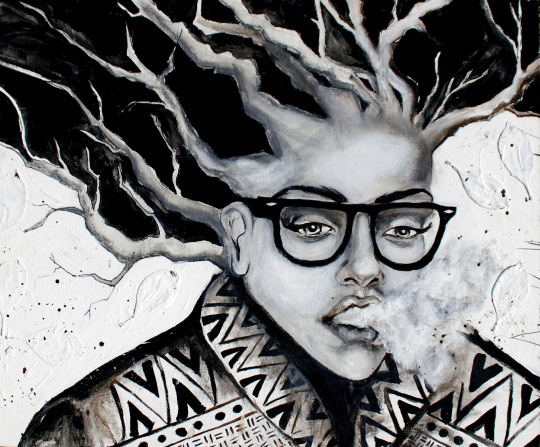


AVAILABLE IN MY ART SHOP ON 1/1
This piece is inspired by a magical forrest that I love in Sea Ranch, CA. I call it a fairy forrest. There is always sunlight or a soft mist that streams through the twisted branches of ancient ancestral trees on the indigenous land of the Pomo Indians.
This piece is called 'Grounding Her Roots' because its all about healing and aligning my root chakra through the healing power of nature. Wandering around this forrest year after year deeply heals, grounds and centers me.
I feel so alive walking through these woods and I wanted to bring that feeling.. that vibration.. to life! So I am making this piece a part of my print collection. It's one of my absolute favorites, so it's kind of a big deal to me!
I hope you shop on 1.1.23! Bring nature into your home!
Love you Blog community!
Brette
brettesims.com
#artbybrette#paintings#woods#forrest#ancestry#trees#fairy trees#forrest walk#nature photographers#nature photogrpahy#painters#art prints#art collectors#art buyers#art sellers#art lovers#black artists#women artists#support artists#shop small#boxing day#christmas gifts#black women#black girl aesthetic#healing#art community#art collector#art gallery#art print#decor
1 note
·
View note
Text
The chief of the Lytton Rancheria that re-established the homeland dies
Margie Mejia, the chief of the Lytton Rancheria who upended the fortunes of the small Sonoma County tribe by creating the San Pablo Lytton On line casino and securing a renewed homeland in Windsor, dies.
Mejia led the roughly 300 members of the Lytton Troupe of Pomo Indians for 27 years. She died of pure causes on Wednesday, October 19, based on an announcement from Lytton Rancheria, a California tribal council. She was in her sixties.
Once I first rose to tribal management in 1995, not one of the tribe’s members owned a house and plenty of of them struggled with poverty, alcohol and drug abuse, and had little to no well being care, she advised the US Senate in 2005 when she sought to construct a house. On line casino in neighboring San Pablo, an exception created exterior its territory as a consequence of advanced federal laws.
This set the tribe on a path to self-sufficiency, charitable giving to many native organizations, tax income to native governments, and constructing a grasp deliberate group within the wine nation of Windsor. On an space of 124 acres that the tribe considers their house, the tribesmen will transfer into 147 houses when the mission is accomplished subsequent yr. The mission features a conventional round home and mountain climbing trails, with plans for a resort and vineyard.
Vice President Cathy Lopez, left, and Leighton Head Margie Mejia of Pomo Indians in Santa Rosa, California, spoke in regards to the improvement they wish to construct on fifty acres of land in Windsor California. This photograph was taken on Friday, March 9, 2001 (CONTRA COSTA TIMES / HERMAN BUSTAMANTE JR.)
“It is an enormous loss for the tribe, nevertheless it’s additionally an enormous loss for our folks,” Val Lopez, head of the Ma Motson Tribal Division, one of many three Ohlone tribes with roots within the Bay Space, mentioned Saturday. “I’m certain she nonetheless has many desires and plans for the tribe.”
In 1961, the federal authorities terminated Lytton Rancheria’s federally acknowledged standing. Practically 30 years later, after litigation, it was restored in 1991 and efforts started to arrange a on line casino and to hunt financial independence.
Mejia as soon as testified earlier than the US Senate: “I observe an extended custom of leaders who’ve been answerable for the preservation of the tribe and its members.” “I’ve lived by the highs and lows of my tribal standing on daily basis of my life, from the devastating influence of poverty, alcoholism and drug abuse, and the ending of our tribal standing, to the financial success we have been lastly in a position to take pleasure in by restoration.”
She mentioned that re-establishing the homeland “is not only a problem out of a variety of points that I’ve sought to push ahead; that is the satisfaction, respect and stability of my tribe.”
For a few years, she served as president of the Sonoma County Indian Well being Challenge, a tribal federation devoted to well being care and advocacy for Native People.
“Marji has been captivated with serving to these much less lucky and supporting, publicly and privately, the myriad of organizations whose work has instantly impacted the underprivileged,” the Tribal Council mentioned in an announcement.
After the deaths of two kids, she is survived by 4 kids and 12 grandchildren.
Lopez mentioned Mejia’s dying would go to nice lengths.
“When the older ones go by, they soak up plenty of historical past and cultural information, indigenous information, their songs, their ceremonies, their prayers,” he mentioned.
Lopez mentioned that in Aboriginal traditions, prayers are despatched to these left behind.
“So we ship a prayer to the members of the tribes, that they can proceed on the trail they’ve chosen and proceed to succeed, and ask that their success please their ancestors and produce them success. Their obligations to the Creator,” Lopez mentioned.
Originally published at San Jose News HQ
0 notes
Text
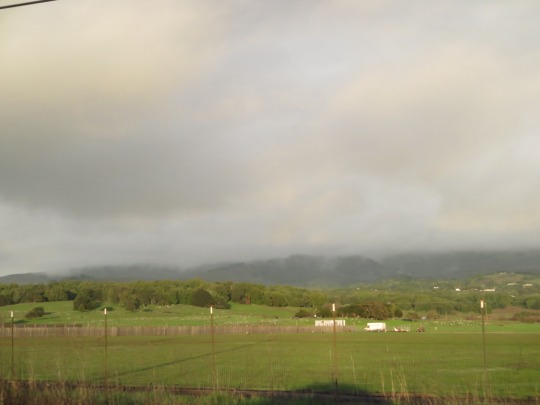
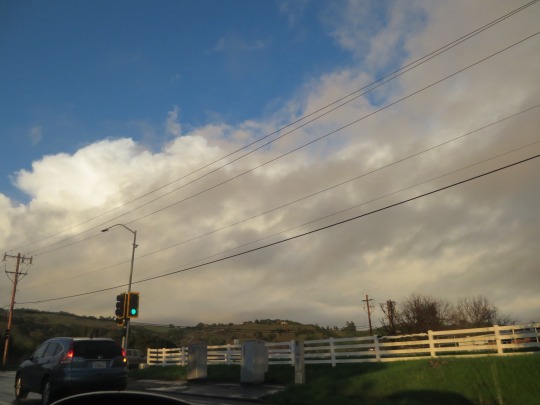
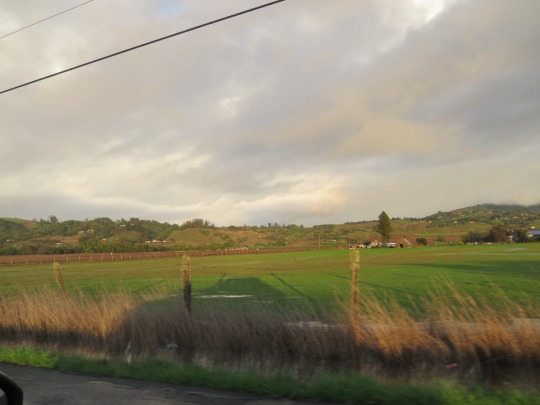
Santa Rosa to Cotati, California.
#Santa Rosa#California#707#Mother Nature#nature#moutains#misty mountains#pacific#pacific northwest#pacific ocean#west coast#Pomo#pomo land#Sonoma county#Mendocino#Mendocino county#native land#stolen land#Native American#personal#thoughts#safe space#femme fatale film#femme fatale#urban#urban explore#urban exploring photography
0 notes
Quote
Having a place that still has redwoods, still has a connection to the land, to me lets me know that we have sacred places that are protected for my children and grandchildren and the future of our tribal people and our Native people in California. A place to go to, a place to remember.
— Crista Ray (Sinkyone/Cahto/Wailaki/Eastern Pomo, tribal citizen of Scotts Valley Band of Pomo Indians, board member of the Sinkyone Council, and daughter of Chris Ray)
#crista ray#protecting tc’ih-léh-dûñ#history#forestry#land back#native americans#sinkyone people#cahto#wailaki#pomo people#eastern pomo#scotts valley band of pomo indians#usa#intertribal sinkyone wilderness council#family#children#grandchildren
0 notes
Video
youtube
In 1994 a group of seven friends began living and farming together after taking over an 80-acre, 1974 organic farm 70 miles north of San Francisco that had been left to decay. They set up an intentional community around farming and wildlife restoration, as well as water management and permaculture, raising their families & learning by doing during a long-term restoration process that will hit its 50 Anniversary soon.
One of the first actions taken in the founding of the Sowing Circle community was an agreement made by all partners that each owner’s “share” in the company that owns the land would not be linked to the land’s market value.
The group worked with the previous landowner to create the first Organic Agricultural Easement in the country which protects in perpetuity the organic gardens and orchards from any development or any use of chemical fertilizers and pesticides.
Today their Occidental Arts & Ecology Center (OAEC) is one of California’s oldest organic farms and their Sowing Circle one of its most-enduring intentional communities. At the start, they wanted to put to practice their ideas of permaculture, water management, and wildlife restoration.
The idea was to live like the land-based communities that predated them- like the Southern Pomo and Coast Miwok-, much like an old-growth forest. “Until recently, the majority of human settlement has functioned much like an old-growth forest,” writes OAEC kitchen manager Olivia Rathbone. “Humans... have long had the skills and knowledge to actually increase the biological carrying capacity of the land rather than deplete it, to render the concept of 'waste' obsolete.”
Today, their kitchen waste is composted, either directly or via their chickens. Their human waste is sent through one of three commercial-grade composting toilet systems - one of which involves mycelium - and which are being monitored by the county and state as testing grounds for more widespread use. Tree clippings (for fire management) become mulch. Their greywater is recycled in the gardens and even their seeds are saved in a very extensive heirloom seed library.
There’s a long history of land-based communities here, after the Southern Pomo and Coast Miwok cane Italian and Portuguese homesteaders in the late 1800’s and finally, from 1974 through 1990 the Farallones Institute established their Rural Center here (a counterpoint to their Integral Urban House in Berkeley) where scientists, designers, and horticulturists lived together and experimented around appropriate technology and sustainable design. Their cluster of 5 300-square-foot passive solar cabins (financed through the state’s Office of Appropriate Technology in the seventies) called “Solar Suburbia” is still the main residential cluster, though they have been enlarged to 700 to 900 square feet.
Brock Dolman moved here in 1994 as one of the seven founding friends of the Sowing Circle. His advice to those hoping to start their own intentional community or permaculture practice: listen to your predecessors rather than trying to follow trends or recipes for design. “It’s really taking our cues from what is the genius of nature that has been in that place for eons and eons and eons.
It has adapted to the conditions: temperature, moisture, soil, availability, slopes, aspects, the traditional ecological knowledge of indigenous people's interacting with that landscape over time. Why we would disregard those clues and impose an idea that we happen to make up because we think we have a better idea. I think our sense is that that's just human hubris and folly."
https://oaec.org/
#video#permaculture#farming#garden#solarpunk#solar punk#gardening#farm#organic farming#organic farm#california
15 notes
·
View notes
Text
Settlers and displaced Natives, a generation of resource extraction, a land trust, and then an end in government ownership: that’s how land conservation stories in California usually go.
Sometime around the late 1800s, a white rancher or logger arrives and acquires newly expropriated Native land. The immigrant makes money off his cows or timber and expands to acquire more property. He and his family grow to love the land. After acquiring a family fortune over a century, they want to see their slice of trees or rangelands preserved. The patriarch retires or dies, the children or grandchildren sell -- at a fair market price, in one of the hottest real estate markets in the world -- to a land trust. The land trust does some cleanup, takes a biological survey, and spends what is necessary to prepare the property for a permanent owner, typically a government agency, which can protect it forever.
The land is “saved” -- although the people for whom it is saved, and the people from whom it is saved, are not often named [...].
In the Bay Area, where there’s both wealth and a passion for conserving nature, this happens often.
From 2010 to 2018, more than 144,000 acres were acquired for the purpose of conservation by land trusts and governments in Bay Area counties and Santa Cruz. More than 1.4 million acres of land are protected in those 10 counties already, according to Together Bay Area, an umbrella organization of regional land conservation groups. All of that protected land was once Ohlone, Miwok, Pomo, or Wappo land; none of it is now with the exception of a 254-acre reservation that the Miwok- and Pomo-descended Federated Indians of Graton Rancheria purchased on their own in 2005; the Kashia Pomo’s 42-acre Stewarts Point Rancheria reservation and nearby 688-acre coastal reserve in northern Sonoma County; the Dry Creek Rancheria Band of Pomo’s 75-acre rancheria outside Healdsburg; the Lytton Rancheria Pomo’s 9.5-acre casino in San Pablo; and a quarter-acre in Oakland owned by the Sogorea Te’ Land Trust.
None of the contemporary Indigenous groups whose ancestors lived in the central San Francisco Bay Area or Monterey Bay area are recognized as tribes by the federal government -- not the Muwekma, not the Ramaytush, not the Confederated Villages of Lisjan, not the Amah Mutsun, not the Rumsen, not the Salinan, not the Ohlone Costanoan Esselen Nation, not the Esselen Tribe of Monterey County.
One Ohlone family holds land in Indian Canyon outside Hollister, the only federally recognized “Indigenous land” on California’s Central Coast. They acquired the first piece by a trust allotment in the early 1900s. [...]
The largest land parcel for sale in California right now [January 2021] is the 50,500-acre N3 Ranch, outside Livermore. Conservation groups have targeted this as a critical acquisition property, home to uncounted rare species and connecting enormous swaths of the biodiverse Diablo Range. The land has been in the same family since a rancher [...] moved there in the 1930s and started buying it from the state. [...] In 2019, no longer interested in ranching, [the owner’s] children offered the ranch for sale for $72 million. [...] If they can, conservation groups will pay this figure. The state government will likely try to chip in, and perhaps N3 will become a new state park. The landless, unrecognized direct descendants of the Verona Band, who today call themselves the Muwekma Ohlone, have not been part of the public conversation nor consulted on the sale.
-------
Eric Simons. “Land Back: Indigenous land repatriation is much discussed and little practiced in the Bay Area. Why is it hard to return stolen land?” Bay Nature. 3 January 2021.
116 notes
·
View notes
Text
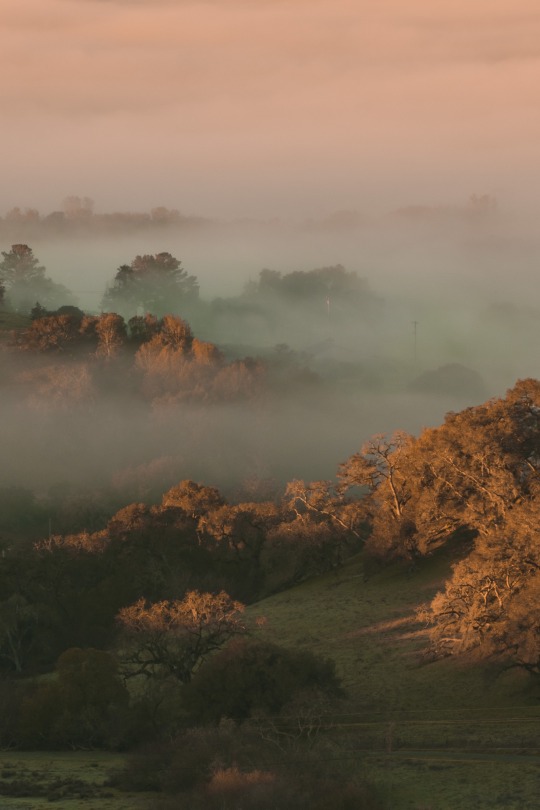
Fog is my love language.
Photo taken on Southern Pomo and Graton Rancheria land.
#film#film photography#from my view to yours#space#adventure enthusiast#fujifilm x100v#grain is good#foggy mountains#foggy mood#sunrise
3 notes
·
View notes
Text
indigenous peoples’ day
i know we’re not exactly close to indigenous peoples’ day, but i have some opinions about it that i need to write down somewhere. i think it’s out of place, and i disagree with biden’s choice to make it a national holiday. hear me out.
christopher colombus was a complicated person. i would argue he’s as terrible as every coloniser, however i would also argue that he’s not nearly the kind of supervillain people tend to paint him as. personally, i judge the medieval society, not the participators. there’s an /excellent/ video by the youtube channel ‘knowing better,’ that i fully believe you should check out before disagreeing with my opinion. if you don’t want to watch it, the youtuber touches on how he’s often mistranslated (intentionally or unintentionally) as saying more unsavoury things about indigenous peoples’ than he actually did. there’s alot of really interesting slightly unrelated things talked about in this video, like how bs the idea that he was a dumbass for thinking he had landed in india when in reality he was using the best navigation and maps available at the time. give the guy a second chance, beyond what the american school system teaches you.
‘if we can pin 400 years of awful history onto one guy, it shifts all of the guilt for what happened to the native americans away from the rest of us.’
i’m not defending colonialism. however, to call him a genocidal racist maniac is just a flat out lie. the fact that a large portion of the native population would die of diseases was a sad inevitability, and the person who would be in the ‘hot seat’ is basically just a matter of chance.
so, after that, you might ask, ‘so, why do you support columbus day then? if all he did was fill the role of the average medieval explorer?’ and the answer is that i don’t lol. i think columbus day is equally useless. my argument for why indigenous peoples’ day is unnecessary stems from that fact. simply covering up the mistake of having a day to celebrate someone who barely spent anytime actually in the americas and wasn’t even the first european to land in the americas (see ‘leif erikson’) seems like a bad move, to me atleast. i’m from an area with a very high native population and i 1000% believe that native culture deserves much, much more recognition, however lumping the struggles of /all/ native americans into one day simply as a way to, like, fucking cover up the mistake of celebrating columbus day, seems like such a disingenuous reason to celebrate native culture.
you’re absolutely entitled to your opinion and disagree with me, but please don’t misinterpret this post as an attack on native american culture. i would make the argument that in place of a filler ‘native american day,’ we should have wider recognition for actual native holidays with important histories behind them, not just fabricated cover ups. coming from northern california, i’ve pretty much only been exposed to pomo culture. basically the only significant holiday i can name is, like, the annual strawberry festival. with that being said, i am aware that solstice days tend to be celebrated by a large number of native cultures, and in my opinion days such as that should be the basis of celebration for native culture.
tl;dr random gringo thinks indigenous peoples’ day and columbus day are equally dumb and should be replaced with actual native holidays
3 notes
·
View notes